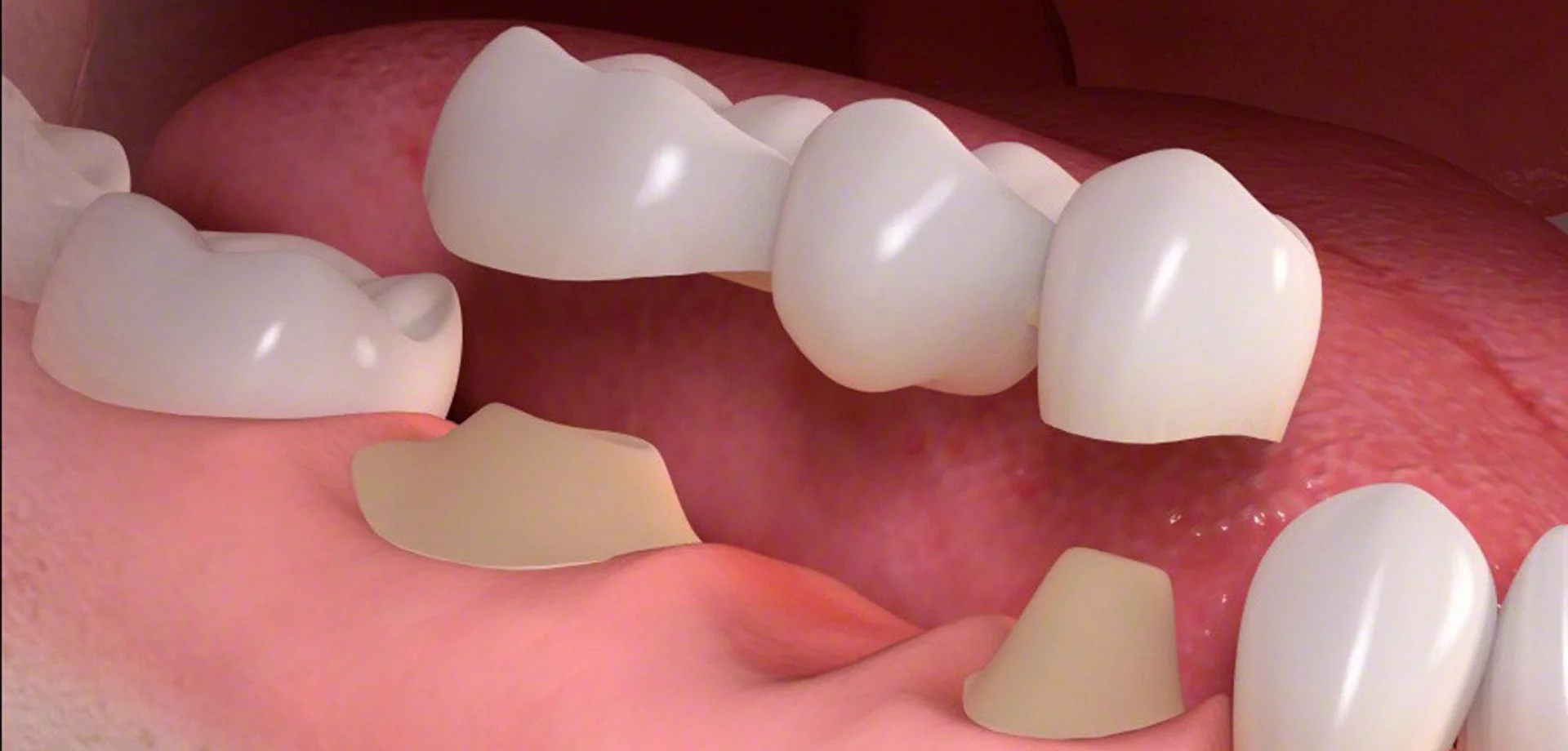If you’re missing one or more of your permanent teeth, your dentist might recommend a bridge to preserve your smile and prevent further damage. The team of expert dentists at RenovaSmiles, offer several different types of dental bridges and regularly work with the best dental labs in the area. To request your bridges consultation, make an appointment today by calling the office nearest you or by clicking the online booking tool.

What are dental bridges?
A dental bridge is an oral prosthetic designed to bridge a gap or space in your smile. Dental bridges usually feature a false tooth (called a pontic) and rely on your healthy, surrounding teeth for support.
There are many different types of pontics, but the team at RenovaSmiles typically uses porcelain or composite resin. These materials mimic the color and light-reflecting properties of your teeth, allowing your bridge to blend in with your smile.
What are the different types of dental bridges?
There are several different types of dental bridges. At RenovaSmiles, the team offers:
Traditional dental bridges
If you’re only missing one tooth and you have healthy teeth on either side of the gap, you might benefit from a traditional dental bridge. A traditional dental bridge features one false tooth. To apply a traditional dental bridge, your RenovaSmiles provider bonds a dental crown to the abutment teeth on either side of the gap that holds the pontic in place.
Cantilever dental bridge
A cantilever dental bridge is similar to a traditional dental bridge. The only difference is that your RenovaSmiles provider bonds it to only one permanent tooth instead of two. If you’re only missing one tooth in a favorable location, your dentist might recommend a cantilever bridge.
Maryland dental bridge
A Maryland dental bridge requires two permanent teeth on either side of a space or gap. However, instead of relying on crowns to stay in place, a Maryland dental bridge features a wire framework. Your dentist bonds this framework to the back of your abutment teeth using dental cement.
Implant-supported dental bridge
Implant-supported dental bridges rely on dental implants or replacement tooth roots for support. Your RenovaSmiles provider surgically places the implant. Following surgery, your bone grows around the implant, fusing it to your jawbone, and the bridge attaches to it.
Does it take more than one appointment to receive a dental bridge?
Getting a dental bridge usually takes two separate appointments. During the first appointment, your RenovaSmiles provider does an oral exam and asks you questions about your goals for treatment.
Your dentist also takes digital X-rays of your mouth to observe the health of your gums and jawbone. If there’s no infection present, your dentist moves forward with treatment.
For a traditional bridge, as an example, after numbing your tooth roots and gums with a local anesthetic, your dentist carefully removes a thin layer of enamel from your abutment teeth.
Next, your dentist takes impressions of your teeth, which serve as a model for your bridge. Your dentist sends your impressions to a laboratory that manufactures your bridge.
A week or two later, you return to RenovaSmiles for your second appointment. Your dentist once again administers a local anesthetic and then lines up your bridge and carefully cements the crowns or metal framework to your abutment teeth. If you have an implant-supported bridge, your dentist carefully screws your bridge in place.
If you’re missing a permanent tooth, you can restore your smile with a dental bridge. Request an appointment at RenovaSmiles today by calling the office nearest you or clicking the online booking tool.

